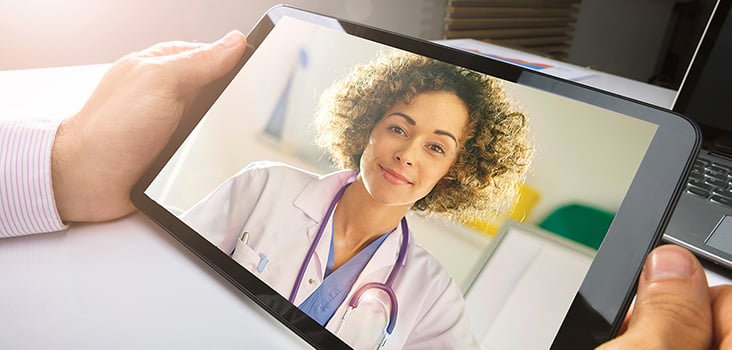
Telemedicine and Its Impact on the Health Care Industry
With the growth of technology, there are now apps that can help you complete almost anything from the comfort of your own home. Thanks to telemedicine, this now includes medical care. Telemedicine connects clinicians and patients via smartphones, tablets, and computers – making access to health care better than ever before. It’s an innovative approach to patient care, and it’s changing the way health care is delivered for millions of Americans. The American Telemedicine Association found that over 15 million Americans received remote health care in 2015. Through telemedicine, health care is achieving new heights and with it, significant benefits. Here are just a few:
Increased Convenience and Efficiency
For most, scheduling a doctor’s appointment means time away from work or home. Telemedicine eliminates travel time using a phone, computer, or tablet – bringing health care to patients wherever they are. Even for minor injuries like cuts, scrapes, and burns, medical attention is just a tap away.
Decreased ER Visits/Lower Wait Times
Now that patients with less severe injuries have additional options for care, wait times in emergency rooms for patients with more serious issues have decreased. In fact, the use of telemedicine visits is expected to reduce emergency room visits by 15% or more.
Improved Health Care Access for Rural Communities and Patients with Special Needs
According to National Rural Health Association, the patient/primary care physician ratio in rural areas is only 39.8 physicians per 100,000 people, compared to 53.3 physicians per 100,000 in urban areas. Telemedicine shrinks this gap, helping the 20% of Americans living in rural communities receive the quality care they need without having to drive to the next town for treatment. And for those who are stuck at home due to physical or psychological ailments, video conferencing enables a stress-free environment for health care.
Early Identification
The convenience of telemedicine makes patients more inclined to get regular check-ups or visit a doctor for smaller health concerns. This two-way technology also helps physicians monitor patient progress and vitals over time. Using remote monitoring technology, a physician can keep tabs on a patient’s blood sugar and cardiopulmonary disease - reducing the risk of mortality by up to 45%.
Simplified Workplace Injury Care
Telemedicine is also changing medical care in the workplace. Depending on the severity of the injury, workers can receive medical attention immediately, without having to leave work. This means less downtime, higher productivity, greater employee satisfaction, and faster claim closures.
Now, getting the medical care you need doesn’t have to be a hassle. We look forward to what the future holds for health care and telemedicine.



